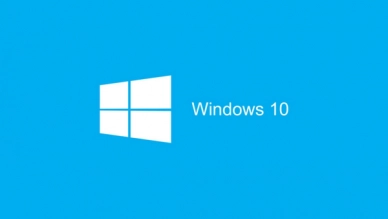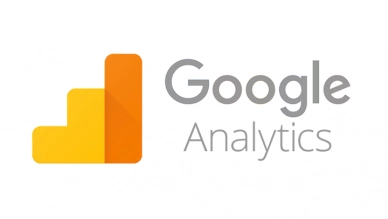The basic knowledge about the Google search engine you need to know
The Google search engine operates entirely automatically. Google uses a program to collect data from various websites and then adds it to their index. Usually, some websites want Google to index them sooner or Google has not indexed them yet, so they will manually operate through the tools Google provides.
I. How does Google's search engine work?
Google's search engine works through the following three basic phases:
1. Data Collection
Google uses an automated program to crawl and search for new website links and newly updated web content. After collection, Google stores the data in a large list for later use.
- Web page titles and descriptions
- Type of data the website provides
- Related keywords
- Number of backlinks
- ...
2. Indexing
After storing web page link information, Google continues to analyze the content on those pages and stores this information in Google's index.
The data Google collects is reorganized and ranked through Google's algorithms.
2.1 Google Panda
An algorithm that controls the quality of website content. Websites with high-quality content will be ranked higher, and vice versa. Some factors for assessing content quality include:
- Shallow, low-quality content: Inaccurate content, lack of information, few reliable sources.
- Copied content: Content copied from other websites or content repeated too many times on the same site.
- Websites lacking credibility or authority: Websites without contact information, unclear information sources.
- Content farming: Websites containing a lot of aggregated, copied content from many other websites for the sole purpose of boosting page ranking.
- Low-quality user-generated content: Content with spelling errors, too short.
- High ad content ratio: Websites created primarily for advertising with a higher ad content ratio than regular content.
- Websites blocked by users: Some pages directly blocked by users in the search engine through the Chrome browser extension indicate poor content, spam.
- Content mismatching search keywords: Irrelevant content, not meeting the search needs of users.
2.2 Google Pigeon
This algorithm was created to prioritize search results close to the user's location during searches. It means that the same keyword in different locations will yield different results. The purpose of this algorithm is to push local businesses to refine and optimize their websites to compete for rankings with other local businesses.
2.3 Google RankBrain
An algorithm that analyzes user search behaviors and purposes on the internet and then provides results that best match the users' search needs.
To improve ranking, you must understand that each keyword will have different ranking priorities; for knowledge-related keywords, the content must be in-depth and authoritative, or for news updates, health issues, it needs to be recent and verified.
The website's credibility is also crucial, so build a website with natural, reputable quality content and focus on delving into the main topics.
2.4 Google Penguin
An algorithm checks links and keywords used. Websites that trade or exchange low-quality backlinks will be penalized by this algorithm, along with unnatural links with content not matching the link description from third parties marked as spam.
Furthermore, websites abusing keywords, repeatedly looping keywords to manipulate, will also be handled by this algorithm.
2.5 Google Mobile
This algorithm was introduced by Google to cater to a large number of mobile users who search for keywords. Besides content quality, the page loading speed on mobile devices also plays a significant role in ranking. This encourages web developers to optimize websites, make them multi-device compatible, and run well on mobile platforms.
2.6 Google Fred
This algorithm addresses websites with many low-quality ads, not offering much value to users. These websites are primarily created to make money rather than deliver value to users.
Some factors that can negatively affect the website include:
- Displaying misleading or scam ads
- Displaying ads that deceive users into clicking
- Covered by links, ads, and poor-quality content
- User experience issues
- Poor mobile integration
- Shallow page content
- Ad misuse
3. Delivering search results
When users type keywords on Google, Google immediately analyzes the users' location, language, device, and what keywords they are searching for, and then provides the most appropriate results. For example, when a user in Vietnam searches for "beautiful flower shop," the results for a user in Korea and a user in Vietnam will be different.
Note: Google does not accept money to increase a website's ranking; all rankings are determined by Google's algorithms.
II. How Google search engine ranks websites
Typically, Google's process of gathering and organizing data takes about 20 - 50 days. Therefore, when a new website shares public content on Google, it will be queued then indexed afterward. However, new content often ranks low, needing Google to analyze and evaluate for a specific period before ranking it top or not. This process goes as follows:
1. Data Collection
As mentioned, at this stage, Google automatically collects data, or website owners manually submit it to Google. From the collected data, Google indexes it.
2. Data Evaluation
Google search engine begins to analyze website data content through factors such as:
- Website structure like OnPage, Structure Data,
- Whether the website content is useful and valuable, what the content talks about, where it is, ... whether it has backlinks from other reputable websites pointing to it,
- Checks for duplicate content; if content is duplicated, it's penalized, ranked low.
3. User Signal Evaluation
This process occurs after the website has been indexed by Google and ranked. It's the phase when ranking rises and falls.
Google assesses user signals through their actions when interacting with the website, using some metrics:
- CTR - the click-through rate to the website
- Bounce Rate - the rate of leaving the page
- Exit Rate - the rate of exiting the page
- Time on page - time spent on the page
- ...
4. Content Ranking
After a long enough period, about 50 days, Google's content evaluation process becomes relatively accurate. At this time, websites that maintain the top often keep their position for a long time. To maintain ranking, try to improve content, user signals, and if your website hasn't achieved a high ranking, you can add more content, audit the website (check for optimization again to see if there's unfair play, whether users can easily access your website, page load times, whether many ads obscure content, on-page score,...). And push for as much organic traffic as possible ( traffic from major newspapers, social media, ...).
Submit feedback
Your email address will not be made public. Fields marked are required *
Search
Trend
-
What is Black Myth: Wukong? Detailed Guide on System Requirements and Gameplay
08-21-2024 . 1k view
-
The simplest and fastest way to log into the Chinese TikTok, Douyin.
01-10-2022 . 1k view
-
Blog sites that will accept AI generated content
07-26-2024 . 1k view
-
Call of Duty: Black Ops 6 - Intense, Mysterious, and Surprising Warfare
09-02-2024 . 1k view
-
The "End of Life" for Windows 10: A Massive E-Waste Threat and Sustainable Solutions
08-18-2024 . 941 view












0 feedback